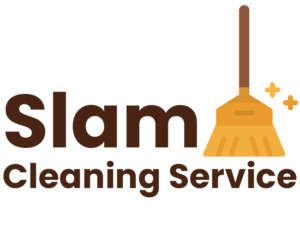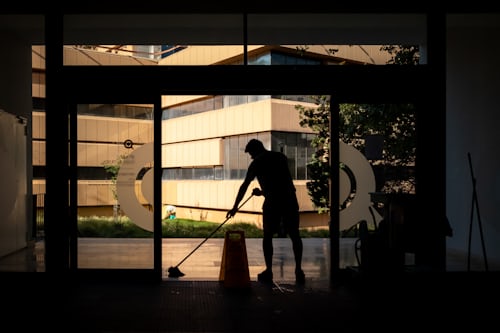Like any other surface in your home, mirrors also accumulate dust and grime. Hairspray residue, toothpaste drops, fingerprints, spit and fog are just a few of the reasons your mirrors get dirty. Unfortunately, these causes are hard to neutralise entirely, but there are methods that can help you bring your mirrors’ sparkle back.
Regular Mirror Maintenance
Regular mirror maintenance is the first step to keeping them clean and just as important as any other household chore. In reality, you don’t have to spend a lot of time to achieve excellent results. The most important factor for quick and effective mirror cleaning isn’t the cleaning products but the tools and techniques you use.
Cleaning Tools and Supplies Needed
For this task, you will need:
distilled white vinegar;
cornstarch;
rubbing alcohol;
glass cleaner (optional);
old newspapers;
a soft cloth;
old toothbrush or cotton pads;
a squeegee (optional).
How to Clean a Mirror
To achieve crystal-clear cleaning results when cleaning your mirrors, follow the steps described below.
#1 Pre-Treating the Mirror
Begin the cleaning process by pre-treating the mirror. To do this, wipe the surface with a clean, soft cloth soaked in rubbing alcohol. This will help you remove as much of the grime and dust accumulated on the mirror surface as possible and prevent the creation of streaks. While doing this, make sure to repeatedly rinse the cloth so it’s clean and nothing sticks to it.
For more stubborn areas, such as the corners, use an old toothbrush or cotton pads to scrub away any build-up.
#2 Making a DIY Cleaning Solution
Create a mixture from half a cup of distilled water, half a cup of distilled white vinegar and 1 tablespoon of cornstarch in a spray bottle and shake it really well. Cornstarch is an ingredient that will help remove any hard stuck-on residue that you were unable to clean in the pre-treatment step.
Before using this cleaning solution, open the windows to provide the room you’re working in with good ventilation.
Alternatively, you can also use a commercial glass cleaner. However, keep in mind that natural cleaning solutions show better results for mirror cleaning because they pose no risk of chemical residue being left behind on the surface.
#3 Wiping Techniques
Apply the cleaning mixture or glass cleaner to the mirror or directly onto a soft, preferably microfibre, cloth or a few pieces of crumpled newspapers. Applying the cleaning solution directly to the cloth instead of the mirror’s surfacer prevents the liquid from accumulating in the corners, making its way underneath the mirror, and causing damage.
If you decide to spray directly on the mirror surface, do it from a distance to avoid wetting the surface too much and the liquid dripping down to the bottom of the mirror and drying. This will also allow you to clean the mirror one area at a time instead of the whole of it at once.
To make the mirror sparkle, use quick “Z” motions, wiping the surface from the top towards the bottom and working from edge to edge.
#4 Preventing Drips
To avoid drip streaks, wet the areas once again and wipe the surface with newspaper or a clean, soft cloth. Repeat the process if necessary to remove any remaining residue.
#5 Buff the Glass
To buff your mirror, use a squeegee or a dry microfibre cloth to make it shine. Do it from top to bottom in small, circular motions.
Once you’re finished, stand in another spot and look at the mirror from a different angle to see if any areas still need cleaning.
Additional Window Cleaning Tips
According to professional domestic cleaners, you can get rid of the dull film that forms on your mirror surfaces from hairspray with rubbing alcohol. They also advise not to use any strong chemicals and toxic cleaners that contain ingredients such as ammonia, acid or alkali to clean your mirrors. If you use a store-bought cleaning product, always check its expiration date and avoid using ones that are past it.
In addition, make sure to avoid these cleaning mistakes:
Avoid using sponges, especially if you’ve already cleaned other areas with them.
Avoid using circular motions because they’ll smear the cleaning liquid on the mirror surface and spread any remaining residue instead of cleaning it. Besides that, your arms will get tired, and you’ll have to put in more effort.
Avoid using soap to clean your mirror because it creates suds and will result in streaks.
Avoid using a damp cloth to wipe the mirror as it will result in the creation of streaks.
Avoid using paper towels because they leave behind a lint-like residue and cause streaks and smudges over the mirror glass.
Don’t clean your mirror with baking soda. It’s a common household cleaning ingredient, but it’s abrasive, and you’ll run the risk of scratching the surface of your mirror.
Avoid using too much cleaner at once because it can be difficult to remove if you don’t clean it fast enough and it dries out.
Avoid touching the surface of the mirror with your fingers because you’ll leave unsightly marks and smears.
Besides that, beware of the type of newspaper you’re using. Many people swear that it’s one of the most inexpensive tools for cleaning glass surfaces and, in the past, it has proven a handy method. However, nowadays, the quality of ink in newspaper printing has changed, and if you choose the wrong type, it may leave more smears on the glass.
To prevent your mirrors from fogging after taking a shower, apply a thin coat of shaving cream over the surface. After you’ve finished showering, wipe the mirror with a clean cloth. Repeat this once every 3 to 4 weeks. If your mirrors get foggy, you can also treat the surface with anti-fog wipes.
Final Words
Mirrors are one of the household items that get dirty very easily, and even the tiniest specks of dust can be seen on them. However, if you’re aware of the proper tools and techniques and mistakes to avoid, you’ll be able to achieve sparkling results without any smears or streaks left behind.




